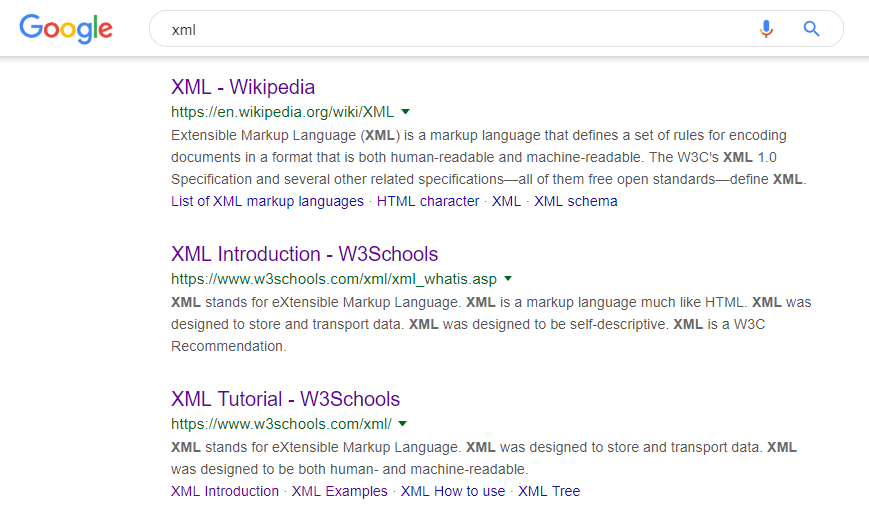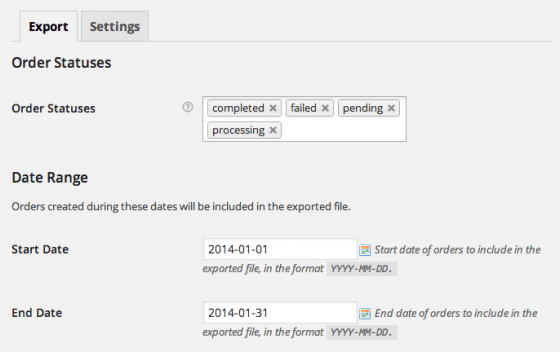How to Upload Xml Site to Wordpress
Extensive Markup Language (XML) is everywhere. It's used for servers, spider web security, updates, and more. When it comes to WordPress, information technology doesn't become equally much attention as more popular languages similar PHP. Even so, knowing what XML is and how it works can be very useful to any website owner or developer.
In this commodity, we're going to talk near XML's basics, and discuss some of its virtually common uses. So we'll explore a few of the ways you can use XML in WordPress.
Let's dig in!
Subscribe To Our Youtube Channel
What XML Is (And Where Information technology'south Used)
XML is what's called a 'markup language'. That means information technology'due south a linguistic communication based on tags used to add together information to elements inside files. One primal distinction of markup languages (equally opposed to programming languages, for case), is that they're designed to be easy to read past both machines and humans.
Here's an example of a simple XML snippet, to requite you lot an idea of what it looks like in action:
<?xml version="1.0" encoding="ISO-8859-1"?>
<note>
<to>John Doe</to>
<from>Jane Doe</from>
<heading>Reminder</heading>
<body>Recollect to buy more milk!</torso>
</note>
If you salve this snippet as a .xml file and open information technology with a browser, you lot'll notice that the browser recognizes it equally code. Withal, you can't just use any tags yous want – there are canonical schemas for XML that you'll demand to use. If you include the wrong tags, your browser won't exist able to sympathize the results and display them properly.
Markup languages, equally a whole, are much more versatile than you might imagine. Another example of this blazon of language is HTML. It's the skeleton of the entire web, but still remains easy to choice up, even if you don't have a programming background.
As far XML itself goes, it has a lot of uses. Information technology'due south often used to store, transmit, and brandish data, for case. In add-on, it's used in web development to store information in plain text, which makes that data easier to import and export. Throughout the next few sections, we'll show you some of those applications in activeness.
How to Use XML to Create Sitemaps
Equally you may know, search engines use 'crawlers' to visit your website, determine what pages information technology contains, and so index them. Then, the search engine uses all of that information to generate lists of relevant results:

The problem is that crawlers sometimes miss content. They can also index pages you'd rather search engines not see, or 'observe' duplicate content where there is none.
The best way to avoid these problems is to create a sitemap, which is a list of all the pages that make up your site and information about how they're connected. Here'southward what a simple sitemap might look similar:
<?xml version="ane.0" encoding="UTF-viii"?>
<urlset xmlns="http://www.sitemaps.org/schemas/sitemap/0.9">
<url>
<loc>http://www.instance.com/</loc>
<lastmod>2019-01-01</lastmod>
<changefreq>monthly</changefreq>
</url>
</urlset>
Naturally, a existent sitemap would include a <url> tag for each folio y'all want search engines to alphabetize. You tin too include additional information, such every bit when each folio was last modified, how often the search engine should bank check it for updates, and more.
Proceed in heed that you tin also create HTML sitemaps. In fact, information technology'south all-time to apply both that language and XML. While it's possible to do this past hand, by far the easiest way to create a sitemap if you're using WordPress is past picking upwards a dedicated plugin.
3 Ways You Can Use XML Files in WordPress
Sitemaps are of import, but they aren't the merely utilize case for this particular language. As we mentioned earlier, XML is widely used to store and transfer data. Let's await at three ways you can use this functionality in WordPress.
i. Importing and Exporting Plugin Data
Even the simplest WordPress website includes more information than yous might imagine. In many cases, each plugin you've installed will too shop its own data prepare, which you tin can sometimes import and export as an XML file.
One case of this is WooCommerce. A lot of WooCommerce extensions enable y'all to export your product list – including all of its associated data – as a plainly XML file:

This can come in handy for your records, or if yous want to import the same products into another website. A lot of other plugins also do this, although some of them rely on the CSV format instead for importing and exporting data.
2. Uploading Theme Unit of measurement Test Data
Installing a new WordPress theme is no pocket-sized feat. Whichever theme you cull will significantly affect your website's style and functionality. This means that before yous settle on one, you'll need to accept a skilful look at how it will impact your item site, rather than but exploring demo sites set up by its developers.
Theoretically, y'all can exam your new theme on a live website, and revert to your former one if you don't similar the changes information technology makes. Notwithstanding, that'southward not a especially safe approach. A better method is to use a local or 'staging' site, install the theme you want to examination, and import dummy data to see how it works in action.
WordPress.org, for example, offers an XML file that contains a full website's worth of testing data. To use it, all you lot have to do is download the file, become to your WordPress dashboard, and select the Tools > Import > WordPress pick:

In exercise, this works just like importing another WordPress website's content into your ain. When the process is over, you can open your website and see how your theme looks with all that new content. It shouldn't take more than a few minutes, and it volition give y'all a ameliorate thought of whether you desire to use the theme in question or not.
3. Migrating Your WordPress Content
Last but not least, what if you want to transfer data from 1 WordPress website to another? To do this, you'd need to go to the Tools > Export tab and cull what content you want to export, from amongst posts, pages, media, and and then on:

WordPress will generate an XML file, and download it to your reckoner. You can then repeat the same procedure as in the previous section, by going to the Tools > Import tab of the second website and uploading the XML file.
Go on in listen – this process will import your WordPress content, just information technology won't affect the plugins or themes y'all're using. To transfer those too, you'd demand to perform a full migration. Information technology'due south besides worth noting that yous can use a like procedure to drift your WordPress.com content to WordPress.org. That's how versatile XML can exist.
Determination
The purpose of a markup language is to include data in a mode that's easy for both people and computers to empathize. In that location are many languages that fill this role, just XML is undeniably the male monarch of markup.
Just to requite you an idea of how versatile XML tin be, let'south epitomize a few of the means y'all tin can use information technology in WordPress:
- Creating sitemaps.
- Importing and exporting plugin information.
- Uploading theme unit exam data.
- Migrating your WordPress content.
Practise you have any further questions about how to use XML in WordPress? Permit'southward talk most them in the comments section beneath!
Article image thumbnail by shahsoft / shutterstock.com
whitakerphers1985.blogspot.com
Source: https://www.elegantthemes.com/blog/wordpress/what-is-xml-and-how-can-you-use-it-with-wordpress
0 Response to "How to Upload Xml Site to Wordpress"
Post a Comment